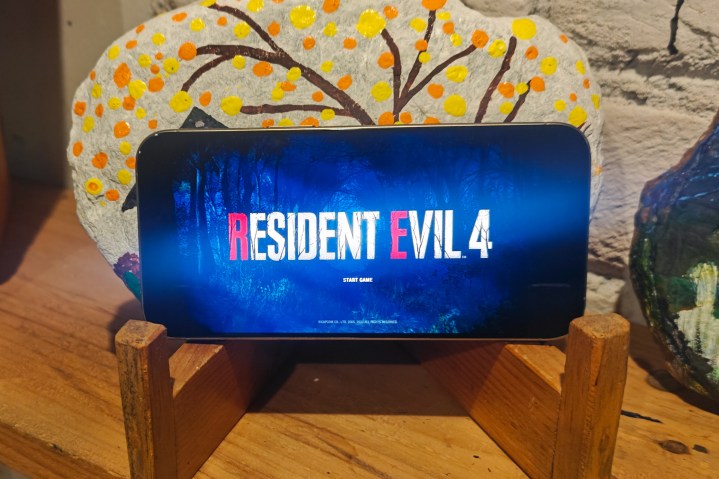
It will run console games, they said. The experience will be amazing, they said. Well, the real experience lands somewhere between half-decent and terribly underwhelming. I am talking about playing PC and console-grade games natively on the iPhone. Less so on the iPad, but more on that later.
Over the past couple of weeks, I have put a healthy number of hours into playing Resident Evil Village and Resident Evil 4 on the iPad Pro and the iPhone 15 Pro Max, respectively. The former device provided a palatable experience, but the latter left me wondering why Apple is even attempting it in the first place.
Playing Resident Evil 4 on the iPhone 15 Pro Max — the game has been ported straight from its console roots to the Apple mobile ecosystem using the Metal architecture — left me with way too many questions and disappointing realizations.
It is particularly upsetting because the iPhone 15 Pro Max relies on the A17 Pro silicon, the world’s first system on a chip (SoC) based on the 3 nanometer process and arguably the most powerful smartphone SoC by a wide margin. Just take a look at the screenshot below from Resident Evil 4 running on my iPhone, and you will get an idea of what playing it is like:

That terrible visual quality achieved at a peak 30 frames-per-second (fps) output is nowhere close to the experience you would get on a PlayStation 5 or a decent PC setup. The only few instances when I really felt a bit of the signature Resident Evil scares were the abrupt scenery change and the haunting background noise.
It just doesn’t feel right
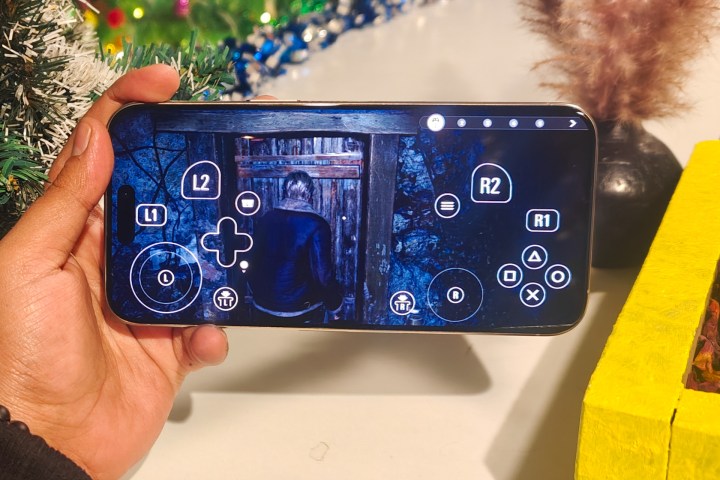
The resolution is appallingly low, and the texture quality is just bad. I certainly would never find such an experience acceptable for a device that costs north of $1,200, features a terrific pixel-dense OLED screen, and packs the most powerful smartphone silicon inside. I am not sure if the downgrading of the visuals was a calculated decision to avoid thermal throttling or something entirely different.
But irrespective of the intentions, the experience is not pleasing. And just like Resident Evil Village, there is no support for keyboard and mouse input for Resident Evil 4 across the iPad Pro and iPhone. So, there’s that extra burden of investing more money on a controller after paying top dollar to buy the game.
But investing money in a controller is an absolute necessity here. Just take a look at the on-screen controls for Resident Evil 4 on the iPhone 15 Pro Max. It’s cramped as hell and makes for an unpleasant experience, especially for a game that should wow the player with its immersively grim and dark world.
If I muted the sound, the visuals would make me believe that it was a game better fitted for an era half a decade in the past. Something has to change fundamentally in what Apple is trying to accomplish with its push into AAA gaming.
Let’s break it down across the cost, convenience, and use-case scenarios.
A high cost for a subpar experience
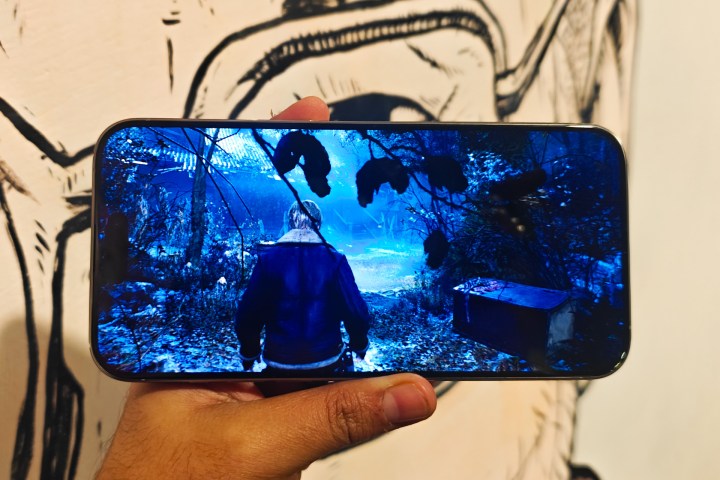
Apple has locked the AAA gaming experience to iPads with at least the M-tier processors and the iPhone 15 Pro duo owing to their 3 nanometer-based silicon. None of that hardware is exactly cheap, especially a compatible iPhone, which starts at $999 before taxes. That’s close to double what you pay for a modern-gen console.
On top of it, the studios are considering Apple as an entirely different — and serious — gaming platform. Simply put, you pay a premium price for playing titles like Resident Evil and Death Stranding on the iPhone and iPad, despite the mobile port being unable to remotely match the performance and graphics fidelity that you get on a console or PC.
But that’s not even the most frustrating hit on your wallet. Instead, enthusiasts will also be burdened with Universal Purchase — or the lack thereof. Only Resident Evil 4 supports Universal Purchase, which means you can buy the game and play it across your iPhone, iPad, and/or Mac, assuming you are that deeply invested in Apple’s hardware ecosystem.
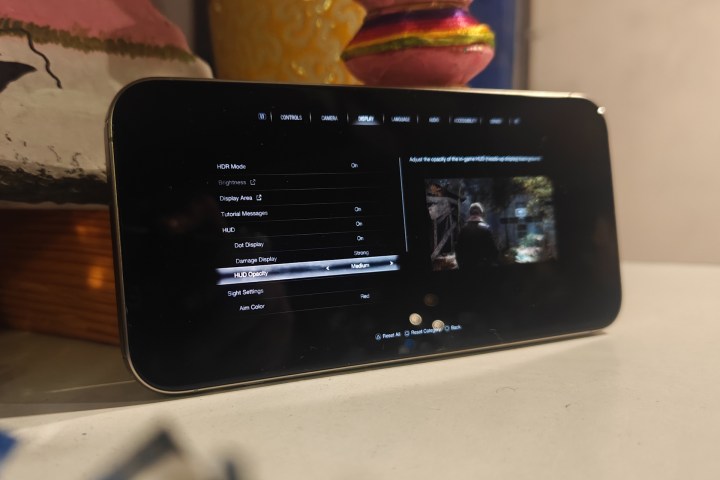
Resident Evil Village doesn’t support Universal Purchase, despite commanding an asking price of $60 for the base game and the Winters’ Expansion. For reasons unknown, Resident Evil 4 will offer that perk. It’s unclear whether the likes of Ubisoft and Kojima Studios/Sony will enable Universal Purchase for their upcoming slate of games.
Both these studios have two marquee games — Assassins’ Creed Mirage and Death Stranding Director’s Cut — lined up for a mobile release. When these games eventually make their way to the iPhone and iPad, one will need to ponder seriously over the value aspect.
Do we even need this?

How desperately do you want to play games on your phone, in a format that is clearly not superior to what you get on a PC or console, while also sacrificing the flexibility of keyboard and mouse support? That’s going to be the key question every time you decide to drop a premium on a mobile game.
The App Store is no stranger to paid games. A healthy bunch of well-received games cost anywhere between $5 and $10. Then there are freemium games like PUBG Mobile, Genshin Impact, and Roblox that end up milking more money from players through in-app item purchases.
But there’s another sleeper truth here. That’s Apple Arcade, which requires its own subscription to play exclusive games such as Oceanhorn 2, Stardew Valley, Dead Cells+, Sonic Dream Team, and Castlevania: Grimoire of Souls. These games stand out from the crowd with their sheer visual quality and attention to detail across all core gameplay aspects.
Apple Arcade games have been made exclusively for Apple, but considering their mobile roots, they are nowhere as taxing on the silicon as AAA games such as the Resident Evil duo. They may not be as fleshed out in terms of storytelling and graphics customization options. But at the same time, these Arcade games absolutely fly on iPhones and iPads without burdening users with processor limitations. Honkai: Star Rail, Diablo: Immortal, and TMNT Splintered Fate look stunning on the iPad and iPhone. The visuals are polished, the gameplay is smooth, and everything feels like it’s slotting in place just perfectly.
That’s a crucial distinction, as Apple has set a baseline for AAA gaming on its latest iPhones starting at $999 and only the expensive tier of iPads with a desktop-class M-series processor. Arcade games would run just as well on an older-generation iPhone as an iPad Mini.
Mobile isn’t the stage to flex gaming muscles.
The final hurdle is the very nature of mobile games. Yes, the segment has come far enough that we now have esports tournaments with a prize pool worth hundreds of thousands of dollars for games like PUBG: Mobile and Apex Legends. But not everyone dreams of split-second maneuvers to taste victory in intense multiplayer games.

Most people that I see gaming on smartphones are either engaged in an Angry Birds session on park benches, building empires in Clash of Clans, solving puzzles, making chess moves, or intently swiping in Candy Crush. That’s the most appealing slot for mobile games.
Of course, action-packed titles like Genshin Impact, Call of Duty: Mobile, and PUBG are cash pots for developers, but these games are also quite demanding. And iPhones, thanks to their superior chip, can play them without breaking a sweat. But you also need a fast internet connection to enjoy these games.
I am not arguing that mobile platforms don’t deserve console-grade games. I’m just stating the obvious here: not every soul would see value in paying top dollar to play Death Stranding on a mobile phone. That’s because the visuals would definitely not be as good as on a console, and on-screen controls persist as a constant turnoff.
Then there’s the fact that these games are fundamentally made to be enjoyed on a bigger screen, with players nestled comfortably on a couch, possibly with a generous amount of soda and chips. Furthermore, cloud gaming and the console remote play experience are vastly superior compared to what Apple is currently trying to accomplish.
With great power comes great responsibility
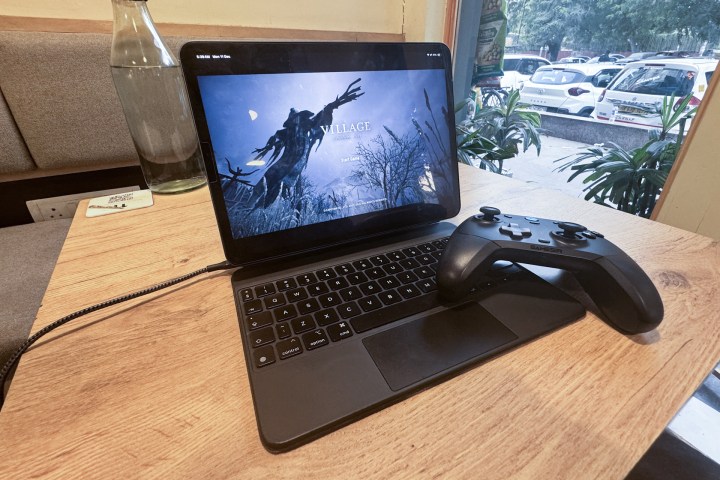
There is definitely a certain sense of achievement in seeing — and telling others — that my iPhone can run Resident Evil 4. However, there is not much truth if I say that I enjoyed playing the acclaimed horror game on mobile as much as I did on my 32-inch screen at home.
The iPad hits somewhat of a sweet spot because it looks and feels like a gaming laptop (I know I am hitting my limits here, but hear me out), primarily because of its form factor, larger screen, better thermal situation, and less aggressive battery drain. But it’s hard to make such strong arguments about the iPhone.
At the end of the day, I wonder why Apple is even attempting to bring console-tier games to the iPhone when it can commission the same studios to make games for Apple Arcade that offer a dramatically superior experience.
Right now, it seems Apple is using games like Resident Evil Village to showcase what its tech stack can accomplish instead of offering an experience worth remembering. What we have right now isn’t up to the Apple standard. I’d much rather pay to play the fluid Apple Arcade games than live with the expensive frustration of playing a subpar console wannabe on a cramped iPhone screen.
Editors' Recommendations
- This one Apple Fitness feature completely changed how I exercise
- We finally know when Apple will announce its 2024 iPads
- An Apple insider just revealed how iOS 18’s AI features will work
- iPhone 16: news, rumored price, release date, and more
- Why you should buy the iPhone 15 Pro instead of the iPhone 15 Pro Max




